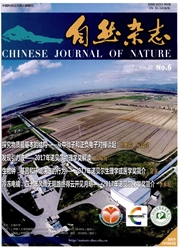

 中文摘要:
中文摘要:
以前的研究证明了东方亚洲 upper-tropospheric 喷气溪流(EAJS ) 的那南方的排水量在夏天月内统治 EAJS 的 interannual 可变性。这研究调查异例在夏天期间与每月的 EAJS 的南方的排水量联系了的热带和平的海表面温度(SST ) 。在 6 月的 EAJS 的南方的排水量显著地在以前的年的冬季与热带中央和平的 SST 异例被联系,当在 7 月和 8 月的排水量与在迟了的春天和并发的夏天的热带东方和平的 SST 异例有关时。EAJS 趋于到在下列 6 月(7 月和 8 月) 向南方的移动相应于一个温暖的 SST 异例在中央(东方) 在冬季(迟了的春天夏天) 和平。亚洲喷气溪流的西的异例南方是热带中央和平的温暖的 SST 的结果在热带对流层的异例相关的温暖,它在 6 月为 EAJS 的向南方的排水量作为一个可能的原因被建议。迟了的春天夏天然而,在热带东方太平洋的温暖的 SST 异例可以通过南方的 teleconnection 在 7 月和 8 月被连接到 EAJS 的向南方的排水量在西方的诺思太平洋(WNP ) 和东亚上。
 英文摘要:
英文摘要:
Previous studies have shown that meridional displacement of the East Asian upper-tropospheric jet stream (EAJS) dominates interannual variability of the EAJS in the summer months. This study investigates the tropical Pacific sea surface temperature (SST) anomalies associated with meridional displacement of the monthly EAJS during the summer. The meridional displacement of the EAJS in June is significantly associated with the tropical central Pacific SST anomaly in the winter of previous years, while displacements in July and August are related to tropical eastern Pacific SST anomalies in the late spring and concurrent summer. The EAJS tends to shift southward in the following June (July and August) corresponding to a warm SST anomaly in the central (eastern) Pacific in the winter (late spring-summer). The westerly anomaly south of the Asian jet stream is a result of tropical central Pacific warm SST anomaly-related warming in the tropical troposphere, which is proposed as a possible reason for southward displacement of the EAJS in June. The late spring-summer warm SST anomaly in the tropical eastern Pacific, however, may be linked to southward displacement of the EAJS in July and August through a meridional teleconnection over the western North Pacific (WNP) and East Asia.
 同期刊论文项目
同期刊论文项目
 同项目期刊论文
同项目期刊论文
 期刊信息
期刊信息
